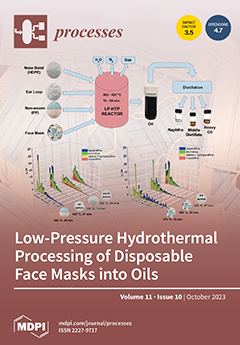Yucatan, Mexico, is renowned for its rich plant diversity, with ~40% melliferous plants. Yucatan bee honey (BH) constitutes ~15.83% of Mexico’s annual BH production, giving high international value. Major melliferous families in Yucatan include Fabaceae, with
Piscidia piscipula (“Jabin”) as an example, and
[...] Read more.
Yucatan, Mexico, is renowned for its rich plant diversity, with ~40% melliferous plants. Yucatan bee honey (BH) constitutes ~15.83% of Mexico’s annual BH production, giving high international value. Major melliferous families in Yucatan include Fabaceae, with
Piscidia piscipula (“Jabin”) as an example, and Polygonaceae, with
Gymnopodium floribundum (“Dzidzilche”), crucial for BH production. This study aimed to profile the metabolome of Jabin and Dzidzilche flowers and their associated BH to identify metabolites for each flower coming from two regions (Tahdziu and Acanceh) of Yucatán. Liquid chromatography–tandem mass spectrometry (LC–MS
2), total polyphenol content (TPC), and antioxidant capacity (AC) were implemented. As many as 101 metabolites (69 in flowers, 55 in BH) were tentatively identified using spectral libraries and in silico predictions, predominantly flavonoids, which accounted for 50.7% of the total identified metabolites in flower and 16.4% in BH. Samples exhibited variations in TPC, AC, secondary metabolites, and chemical classes depending on geography and botanical origin. Dzidzilche flowers from Acanceh displayed the highest total polyphenol content (TPC, 1431.24 ± 15.38 mg GAE/100 g dry matter) and antioxidant capacity (AC, 93.63% inhibition). Among the metabolites detected in flowers (
Piscidia piscipula,
Gymnopodium floribundum), 50.7% were found to be part of the flavonoid chemical class, whereas in their respective honey samples, only 16.4% of the identified metabolites were categorized as flavonoids. Vanillin and vitexin were tentatively identified as potential markers for the botanical origin identification of honey from
Piscidia piscipula and
Gymnopodium floribundum, respectively. Recognizing botanical and geographic BH origin is important for product authentication, identification, and traceability. This study offers chemical insights that can be valuable and complementary to melissopalynology, aiding in determining the origin and quality of Yucatan BH.
Full article





